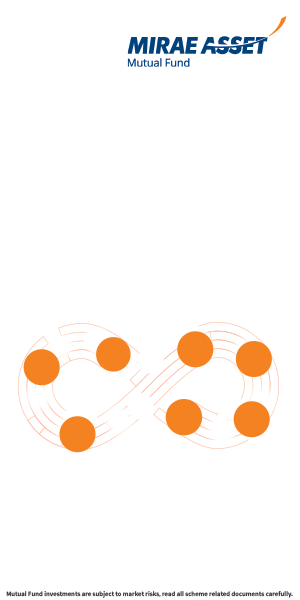Margin of Safety: Importance in Equity Investing

Margin of Safety is a very important concept in equity investing and is used by many fund managers who follow the value investment style. The term “Margin of Safety” was coined by Benjamin Graham in his famous 1934 book, Security Analysis. In this post, we will discuss what “Margin of Safety” is and how it is used in equity investing.
What is Margin of Safety?
Margin of Safety is the strategy to buy stocks which are trading at a significant discount to their intrinsic value or fair price. While fundamental analysis focuses on the future earnings or cash flows of a stock to determine the intrinsic value, margin of safety takes into account both the intrinsic value as well the market price of the stock; as Benjamin Graham said, “the margin of safety is the price you paid for the stock”.
How is Margin of Safety used in investing?
Suppose the share price of a company is Rs 1,000. The share price may go up or down in the future. In order to make an investment decision, you will ask, what is the intrinsic value of the stock? If the intrinsic value of the stock is less than market price, then stock is overpriced (expensive) and you will avoid the stock. If the intrinsic value of the stock is more than the market price, then stock is underpriced (cheap) and you may find the stock attractive. Suppose the intrinsic value of the stock is Rs 800. The stock at current market price of Rs 1,000 is overvalued or overpriced by 20%. You will wait for the stock to come to Rs 800. However, if you apply margin of safety you will apply a discount on the intrinsic price to set a target purchase price.
The percentage discount is your margin of safety. How much margin of safety you want to have is your choice; typically it ranges from 10% to 30%. If some of our readers are surprised at a 30% margin of safety (discount on fair price), Benjamin Graham’s most famous disciple, the legendary Warren Buffett, is known to have applied a 50% discount on fair price as his target price.
Going back to our example, let us assume your margin of safety is 20%. The intrinsic value (fair price) of the stock is Rs 800. So, you will set your target price at Rs 640. The stock is currently trading at Rs 1,000. Obviously, you will not buy it, at this level. You will not buy the stock, even if it falls to Rs 800 (fair price). You will wait till the share price falls to Rs 640. Chances are that, you may have to wait for a very long time. However, if the stock price falls to Rs 640, you can buy the stock with confidence, unless the fundamental outlook has changed. I have written confidence in bold for a reason; usually, when people buy stocks they are worried about losing money, if the share price falls a lot. When you invest with a margin of safety, you can feel reasonably confident of limited downside risks.
Philosophy of Margin of Safety
Different investors have varying attitudes towards risk. Some people want to make money in stocks quickly, but they should also be prepared to incur a loss if the price moves the other way. One of the most important tenets of value investing espouses is the importance of preservation of capital. Margin of safety ensures that, you are buying stocks at deepdiscounts and this limits your downside risks even in market crashes.
Margin of safety also protects the investor from mistakes. Go to a stock market website and you may find five different analyst recommendations for the same stock; the recommendation may be the same (buy or sell), but the target prices may be different. Some analyst may give a buy recommendation for a stock, while another analyst may give a sell recommendation for the same stock.
All of these analysts cannot be totally right; only one can be totally right and others can be only partially right or maybe no one is right. Estimating the intrinsic value of a stock is highly subjective; different analysts, brokerage houses and fund houses use different valuation models, which can produce different results. Further forecasting future earnings or cash flows is quite difficult, because a lot of assumptions go into the forecast of future cash flows or earnings. By using a margin of safety, you have a cushion if you overestimated the intrinsic value of the stock.
Using a margin of safety, you can not only limit your downside risks, but you can get extraordinary returns in the future, provided you bought fundamentally good stocks. With margin of safety, you will buy stocks at deep discount. Eventually, when the market recovers, the stock price may go back to its intrinsic value or much higher, if the earnings of the company are on the right trajectory.
2008 was undoubtedly the worst stock market crash that most of us saw in our lifetimes; the Dow Jones (in the US) fell by 54% and our Sensex crashed by 60%. Investors panicked and exited equity market incurring huge losses. Warren Buffett had other ideas. The stock market crash of 2008, gave him the margin of safety to make very profitable investments. Buffett made a profit of $10 Billion by investing in good companies between 2008 and 2011 (when the market fell again). When investors panicked and chaos reigned in the market, Buffett was at his analytical best, a great example of which was his investment in Goldman Sachs. In September 2008, Lehman Brothers, one of the most well known investment banks in the world collapsed, sending share prices of other investment banks plummeting. By employing analytical principles of value investing, Buffett rightly concluded that, Goldman Sachs, the largest investment bank of world, was not facing the kind of losses due to asset write-downs that some of the other investment banks were facing. So he bought Goldman Sachs stock (warrants) at bargain basement price (huge margin of safety) and made several billion dollars of profit in his Goldman Sachs investment alone by 2013.
Where can investors find Margin of Safety?
Benjamin Graham suggested that, investors should not chase popular (momentum) stocks and instead look at less popular companies with low price to earnings (P/E ratio) or price to book (P/B ratio) multiples. He also asked investors to analyze the balance sheet, including schedules, management commentary, footnotes etc, very carefully to understand if a company had hidden assets, which are potentially unnoticed by analysts. Discussions with management can also reveal useful information. Obviously, this takes a fair amount of expertise, which retail investors may not possess, but good mutual fund managers can identify such companies. Investors, however, should note that, share prices of companies with very low P/E or P/B ratios can remain depressed for a fairly long time. Patience is a very important virtue in value investing and is likely to be rewarded, very handsomely, in the long term.
Conclusion
The philosophy of Margin of safety is not a culturally alien concept for us. We have seen our mothers haggle with vegetable sellers and shopkeepers to get a bargain. We see long queues in petrol pumps at night, if a fuel price hike is expected the next day. We see a rush in consumer electronics stores before the onset of hot Indian summers so that we can get pre-season discounts on ACs and refrigerators. But there was a dissonance in our equity investing behaviour. In our stock markets, for many years, I saw people chasing momentum stocks. But the market correction of 20% during 2015 – 2016 was a welcome change; unlike previous bear market years, Indian investors did not exit the market in 2015 – 2016, they continued with their Systematic Investment Plans. Some investors also used the correction to tactically increase their asset allocation in equities. They are sure to be quite a happy lot now. Retail investors may not have expertise in fundamental analysis, but by continuing to invest in mutual funds in deep corrections, they can in their own way ensure margin of safety.
Mutual Fund Investments are subject to market risk, read all scheme related documents carefully.
RECOMMENDED READS
Mirae Asset Global Investments is the leading independent asset management firm in Asia. With our unique culture of entrepreneurship, enthusiasm and innovation, we employ our expertise in emerging markets to provide exceptional investments opportunities for our clients.
Quick Links
- Fund Manager Interview - Mr. Neelesh Surana - Chief Investment Officer
- Fund Review - Mirae Asset Emerging Bluechip Fund : Best Midcap Mutual Fund in the last 6 years
- Fund Review - Mirae Asset India Opportunities Fund: One of the best SIP returns in last 8 years
- Fund Manager Interview - Mr. Neelesh Surana - Chief Investment Officer
- Our Articles
- Our Website
- Investor Centre
- Mirae Asset Knowledge Academy
- Knowledge Centre
- Investor Awarness Programs
Follow Mirae Assets MF
More About Mirae Assets MF
POST A QUERY






